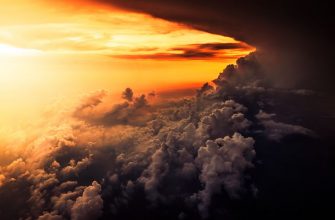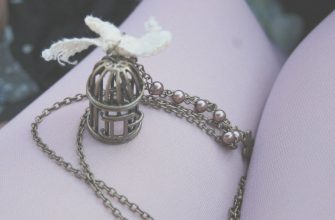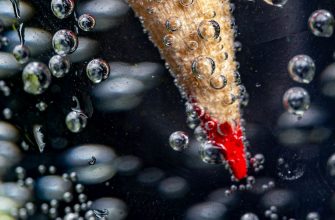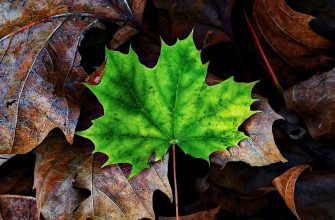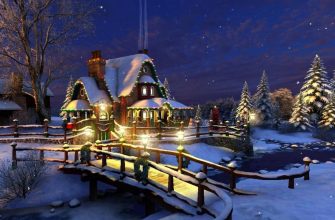Сочинение на английском Казань / Kazan
They say big cities look pretty much the same: concrete and glass jungle. But anyone who has ever been to Kazan would never agree with that.
Kazan is very special city, truly multicultural. It is a place where Tatars and Russians live together. Both Tatar and Russian languages are widely spoken. Both Sunni Islam and Orthodox Christianity are practiced. In fact the list of ethnic groups and confessions is much longer.
That is why in Kazan one can discover such a variety of architecture styles. There are many beautiful temples and mosques, churches and monasteries. The Temple of All Religions is a unique embodiment of cultural diversity in one building.
But not only religious buildings are beautiful. Puppet Theatre, Palace of agriculture, Pyramid concert hall and many other architectural masterpieces attract tourists from all over the world.
Interesting feature of the city is public transport coloring: buses are red and trolleybuses are green. Kazan also has a subway. It was opened in 2005. Now there are 11 stations. Unlike buses and trolleybuses it has pretty typical coloring but nice tokens, which remind citizens that Kazan is over 1000 years old.
Another thing reminding of Kazan thousandth anniversary is 835 meters long Millennium Bridge with the 45-meter pylon which looks like the letter M.
Cultural diversity is expressed not only in architecture, but also in music and cuisine. There are a lot of cozy cafes and restaurants.
Besides, Kazan has great sports infrastructure. It hosts many international sports competitions.
One more great option for family weekend is visiting huge Riviera aquapark.
So, there are plenty reasons to visit the city at least once in your life.
Говорят, все большие города похожи: джунгли из стекла и бетона. Но тот, кто хоть раз был в Казани, с этим не согласится.
Но красивы здесь не только религиозные сооружения. Кукольный театр, Дворец земледельцев, концертный зал Пирамида и другие архитектурные шедевры привлекают туристов со всего мира.
Также о тысячелетней годовщине Казани напоминает 835-метровый мост с 45-метровой опорой в форме буквы М.
Культурное разнообразие выражено не только в архитектуре, но и в музыке и кулинарии. Здесь много уютных кафе и ресторанов.
Кроме того в Казани отличная инфраструктура для спорта. Здесь проходит много международных спортивных соревнований.
Так что есть множество причин посетить Казань хотя бы раз в жизни.
Kazan
Сочинение на тему «Казань»
на английском языке с переводом на русский язык
Kazan
Казань
Kazan is one of the largest (the population is over a million citizens) and the most ancient cities of Russia, the capital of the Republic of Tatarstan. It is an important economic, scientific, religious, and cultural center where various cultures (Tatar, Russian, and European) and religions (Islam and Orthodox Christianity) coexist harmonically. Kazan is situated on the great river Volga; its river port and international airport are significant as trading and transport junctions. Some architectural objects of Kazan are in the list of UNESCO world heritage sites. Sports life of Kazan also develops quickly: there are famous local football, hockey and basketball clubs, and in recent years, the city held several large-scale competitions.
Казань – один из крупнейших (население превышает миллион человек) и древнейших городов России, столица Республики Татарстан. Она является важным экономическим, научным, религиозным и культурным центром, где разные культуры (татарская, русская и европейская) и религии (ислам и православное христианство) гармонично сосуществуют. Казань расположена на великой реке Волге; её речной порт и международный аэропорт – значимые торговые и транспортные узлы. Некоторые архитектурные объекты Казани внесены в список памятников Всемирного наследия ЮНЕСКО. Спортивная жизнь Казани также быстро развивается: там есть знаменитые местные футбольный, хоккейный, баскетбольный клубы, а в последние годы в городе прошло несколько масштабных соревнований.
According to historians, Kazan was founded at the beginning of the 11 th century. In the Middle Ages Kazan became a trading (blacksmithing, leather production, etc.) and cultural center of the Golden Horde. Afterward, it became the capital of Kazan Khanate, but in the 16 th century, Ivan IV joined it to Russia by force. As a part of Russian Empire, Kazan improved its industry, education (the third university in the country was opened there), and the level of life. Although Kazan suffered during the Civil War, it grew in the 20 th century turning into a megacity.
Согласно мнению историков, Казань была основана в начале XI
века. В Средние века Казань стала торговым (кузнечное дело, кожевенное производство и т.д.) и культурным центром Золотой Орды. Впоследствии она стала столицей Казанского ханства, но в XVI веке Иван IV силой присоединил его к России. Пока Казань была в составе Российской империи, развивались её промышленность, образование (третий университет в стране был открыт там) и уровень жизни. Хотя Казань пострадала в ходе Гражданской войны, в XX
веке она выросла, превратившись в мегаполис.
Nowadays, due to numerous landmarks, Kazan is a popular tourism direction. The ensemble of its medieval Kremlin is very impressive, as well as fine mosque Qol Sharif. Everyone enjoy visiting parks, museums, theaters of Kazan; besides, this city is a center of many national and international festivals of classical and modern (including ethnic) music.
В наши дни, благодаря многочисленным достопримечательностям, Казань – популярное туристическое направление. Ансамбль её средневекового Кремля очень впечатляющ, как и прекрасная мечеть Кул-Шариф. Все с удовольствием посещают парки, музеи, театры Казани; кроме того, этот город – центр многих национальных и международных фестивалей классической и современной (в том числе этнической) музыки.
Тема Казань на английском языке: достопримечательности, рассказ о городе
Kazan is the capital of Tatarstan Republic. [Кезэн ис зэ кэпитал оф Татэстэн Репаблик] – Казань столица Республики Татарстан.
Kazan is on the list of UNESCO World Heritage cities [Кезэн ис он зэ лист оф Юнеско ворлд хэритидж ситис] – Казань находится в списке городов Всемирного наследия ЮНЕСКО.
The people of Kazan city have their own culture, traditions and language. [Зэ пипл оф Кезэн сити хэв вей аун калчэ,традишионал, энд лэнгвидж]- У жителей Казани своя культура, традиции и язык.
The most interesting sights in Kazan [Зэ мост интерестинг сайтс ин Кезэн] – Самые интересные достопримечательности в Казани:
The Kazan Kremlin [Зэ Кезэн Крэмлин] – Казанский Кремль.
The Kazan Kremlin is a unique historiсal and cultural monument. [Зэ Кезэн Крэмлин ис э юник хисторикал энд калчэрал моньюмент] – Казанский Кремль это уникальный исторический и культурный памятник.
Suyumbike tower [Сюмбике тауэр] – Башня Сююмбике.
It is seven-storey leaning tower, the legendary architectural symbol of Kazan [Ит ис сэвэн стори линин тауэр,зэ леджендари акитэкшал симбэл оф Кезэн] – Это семиэтажная «падающая» башня, легендарный архитектурный символ Казани.
Zilant Dragon [Зилант Дрэгон] – Дракон Зилант
Zilant is a flying serpent, legendary protector of the city. [Зилант ис э флаин серпент, леджендари прэтектэ оф зэ сити] – Зилант летающий змей, легендарный защитник города.
Blue Lake [блю лейк] – Голубое озеро
Blue lake is located in 20 km from Kazan. [Блю лейк ис локейтед ин твенти киламетэрс фром Кезэн] – Голубое озеро находится в 20 километрах от Казани. This lake has blue colour and ability not to freeze even in the winter. [Вис лейк хэс блю калэ энд эбилэти нот ту фриз ивэн ин зэ винтэ] – Это озеро имеет голубой цвет и способность не замерзать даже зимой.
National Museum of Tatarstan Republic [Нашэнэл Мьузиам оф Тэтастэн Репаблик]- Национальный музей Республики Татарстан
It is the largest museum in Tatarstan that founded in 1894 [Ит ис зэ ладжест мьузиам ин Тэтастэн вят фаундэд ин эйтин наинтин фо] – Это крупнейший музей в Татарстане который был открыт в 1984 году. There are over 800 thousand units in the museum’s collection. [Зэ ар эувэ эйт хандрид фаузэнд юнит ин зэ мьузиамс коллекшэн] – В коллекции музея более 800 тысяч экспонатов.
Temple of All Religions [Тэмпл оф ол релиджонс] – Храм всех религий
It is an architectural complex in Kazan. [Ит ис эн акитекшэл комплекс ин Кезэн]- Это архитектурный комплекс в Казани. The Temple consists of several types of religious architecture including a synagogue, an Orthodox church, a mosque. [Зэ Тэмпл консист оф северэл тайпс оф релиджэс акитекшэ инклудинг э синэгог, эн эфэдакс чётч, э маск] – Храм состоит из нескольких видов религиозной архитектуры, включая синагогу, православную церковь, мечеть.
Kazan’s central market [Кэзенс сэнтрэл макет] – Центральный рынок Казани
The Central Market is a classic bazaar in the open air. [Зэ центрэл Макет ис э класски бэза ин оупен эир] – Центральный рынок это классический базар на открытом воздухе. Here you can find everything. [Хиэ ю кэн файнд эврифин] – Здесь вы можете найти все что угодно.
Kazan city, Russia
Kazan, the capital of the Republic of Tatarstan, is a city with a long history located about 820 km east of Moscow on the left bank of the Volga River. This is one of the largest economic, scientific, educational, religious, cultural, and sports centers of Russia.
Kazan city flag
Kazan city coat of arms
Kazan city map, Russia
Kazan city latest news and posts from our blog:
News, notes and thoughts:
10 July, 2013 / The situation in Kazan Universiade becomes ridiculous. The Russian team is leading with a total 82 medals, including 41 gold medals. However, the closest pursuers, Japan and South Korea, have 6 gold medals. Russian sports officials apparently are eager to show excellent results. That’s why Russian champions of the Olympic Games, World Championships are included in the team. A brilliant solution!
Brief History of Kazan
Foundation of Kazan and its early history
In the 1220s-1240s, the Volga Bulgaria was conquered by the Mongols and, retaining some autonomy, was included in the Ulus of Jochi also known as the Golden Horde. After the formation of the Golden Horde, the Volga Bulgarians (Bulgars) became one of the main components in the ethnogenesis of today’s Kazan Tatars and Chuvashs.
In the 13th-14th centuries, Kazan became an important trade and political center of the Golden Horde. The growth of the town was also due to its favorable geographical position at the intersection of major trade routes connecting East and West. In the Russian chronicles, Kazan began to be mentioned in the 14th-15th centuries.
In 1438, the Bulgarian fortress of Kazan was captured by the Golden Horde khan Ulugh Muhammad, and the town became the capital of the Kazan Khanate. During this period, the production of leather goods, pottery, and weapons developed here. Kazan traded with Moscow, Crimea, the Ottoman Empire, and other regions.
Kazan as part of the Russian Empire
In 1708, Kazan became the capital of the vast Kazan Governorate. During the reign of Peter the Great, it became one of the most important industrial and administrative centers of Russia. A tannery and a cloth manufactory were built here. In 1722, Peter the Great visited Kazan.
The rapid development of Kazan began after the visit of Empress Catherine II in 1767, when she lifted all previous restrictions on the construction of stone mosques and Tatar public buildings, as well as in connection with her decree “On the tolerance of all faiths.” She presented Kazan with a galley and a carriage. The galley was lost during a fire, but the carriage was preserved. It is also installed as a replica-monument on the pedestrian Bauman Street.
In 1804, Imperial Kazan University was opened, the most famous students of which are Vladimir Lenin and Leo Tolstoy. In 1844, Karl Ernst Claus, professor at Kazan University, discovered ruthenium and named it in honor of Russia. Ruthenium is the only chemical element discovered in the Russian Empire and the USSR before the synthesis of transuranium elements in the late 20th century.
In the second half of the 19th century, significant changes took place in the infrastructure of Kazan: gas (1874) and electric (1897) lighting, one of the first electric trams (1899), telegraph (1859) and telephone (1881). In 1874, the city water supply was opened. In 1896, the railway connected Kazan with Moscow.
Kazan in the 20th century and beyond
In 1901, the Kazan Observatory was opened. In 1914, the population of Kazan was about 194,200 people. In 1918, during the Civil War in Russia, fierce battles were fought for Kazan. The troops of the Czechoslovak Legion in the course of five-day battles captured Kazan on August 6. The Red Army established control of the city on September 10.
On May 27, 1920, the Tatar Autonomous Soviet Socialist Republic was formed with its capital in Kazan. In the 1930s, intensive industrialization of the city began, accompanied by rapid population growth. In 1939, the population of Kazan was 398,014 people.
During the Second World War, large factories were evacuated to Kazan. The city also became the temporary scientific “capital” of the USSR. The Academy of Sciences of the USSR, as well as most of the research institutes and a number of design bureaus were evacuated here.
After the war, the active development of the city continued. Kazan became one of the largest industrial, scientific, and cultural centers of the USSR, the population increased 2.5 times. In 1979, it exceeded 1 million people. Kazan also became one of the largest river ports, a new airport was built.
In 1990, Kazan was declared the capital of the sovereign Republic of Tatarstan. In the 1990s, this city became one of the most important interregional political, financial, sports, and tourist centers of Russia. In 2008, Kazan registered the brand “The Third Capital of Russia.”
In the 1990s-2000s, the historic center of Kazan was significantly rebuilt in preparation for the celebration of the millennium of the city. In 2005, the Millennium of Kazan was celebrated. In connection with this event, such objects as the Kazan Metro, the Kul-Sharif Mosque, the Millennium Bridge, the new hippodrome, Tatneft-Arena were built.
About one million tourists a year began to visit Kazan making it one of the most important tourist centers in Russia. The Kazan Kremlin became a UNESCO World Heritage Site. Several foreign general consulates and other diplomatic, trade, humanitarian representations were opened in the city.
Such large international sports competitions as the World Summer Universiade 2013, the World Aquatics Championship 2015, and six matches of the 2018 World Cup were held in Kazan.
Contrasts of Kazan
In the center of Kazan
Author: Sergey Bulanov
Kul-Sharif Mosque and Saints Peter and Paul Cathedral in Kazan
Author: Ayhan Sahin
The cultural-entertaining complex Pyramid in Kazan
Author: Sergey Kozin
There are several legends associated with the name of the city. According to the most common one, it originates from the Tatar word “kazan” meaning “cauldron”. The legend says that Kazan was founded on the spot where water boiled in a cauldron dug into the ground without fire. The historical symbol of Kazan, which is depicted on the emblem of the city, is the mythical dragon-like creature Zilant often mentioned in Tatar legends.
The industrial basis of Kazan includes engineering, chemical and petrochemical industries, light and food industries. The largest enterprises of Kazan are the chemical complex of Kazanorgsintez, the Kazan gunpowder factory (the oldest in Russia), and a unique cluster of three aviation industry enterprises. Tourism is also one of the promising directions for the development of the city. In 2019, about 3.5 million tourists visited Kazan.
This is one of the largest transport and logistics hubs in Russia. Kazan International Airport offers regular flights to such cities as Antalya, Baku, Barcelona, Yekaterinburg, Krasnodar, Moscow, Omsk, Perm, Thessaloniki, St. Petersburg, Sochi, and a number of others. Kazan (Volga) Federal University is one of ten Russian federal universities and the third (after St. Petersburg State University and Moscow State University) oldest university in Russia.
Kazan is a place where people of different nationalities and religions live peacefully, in an atmosphere of friendliness and tolerance. In this city, two religions are historically closely intertwined: Sunni Islam and Orthodoxy. Kazan has more than 60 mosques, 40 Orthodox churches, a dozen churches of other Christian movements, 1 synagogue, prayer houses of Bahai and Krishna.
In total, representatives of over 115 nationalities live in the capital of Tatarstan. According to the 2010 census, the most numerous of them are Russians (48.6%) and Tatars (47.6%). Also among the residents of Kazan you can meet the Chuvash, Ukrainians, Mari, Bashkirs, and Udmurts.
Main Attractions of Kazan
Epiphany Cathedral (1731-1756) on Bauman Street. The main attraction of this church is its magnificent tall bell tower (74 meters high) built in the style of “Russian Baroque” with numerous external decorative elements.
Chak-Chak Museum. This museum located in the Old Tatar Sloboda is dedicated to the main Tatar dessert and one of the symbols of Tatarstan. The atmosphere of the Tatar prosperous house of the late 19th century is recreated here (old furniture, household utensils, tools, etc.). The exposition tells about the history of chak-chak from the times of the Volga Bulgaria to the present. Parizhskoy Kommuny Street, 18.
The Temple of All Religions. This unusual architectural structure dedicated to various religions of the world is also known as the Ecumenical Church and the International Cultural Center for Spiritual Unity. This is the only such building in the world on the territory of which 16 faiths are united, but no religious rites are held here, since the complex has only symbolic meaning. Staro-Arakchinskaya Street, 4.
The Family Center “Kazan” (2013). This original building serves as the Wedding Palace of Kazan. Inside, there are three thematic zones, which are decorated and furnished in the styles of the Volga Bulgaria, the Kazan Khanate, and in a classical manner. The top of the building is crowned with a huge Turkic cauldron (“kazan”). In the days free from wedding registration, tourists can visit this building and climb to the observation deck. Sibgat Khakim Street, 4.









